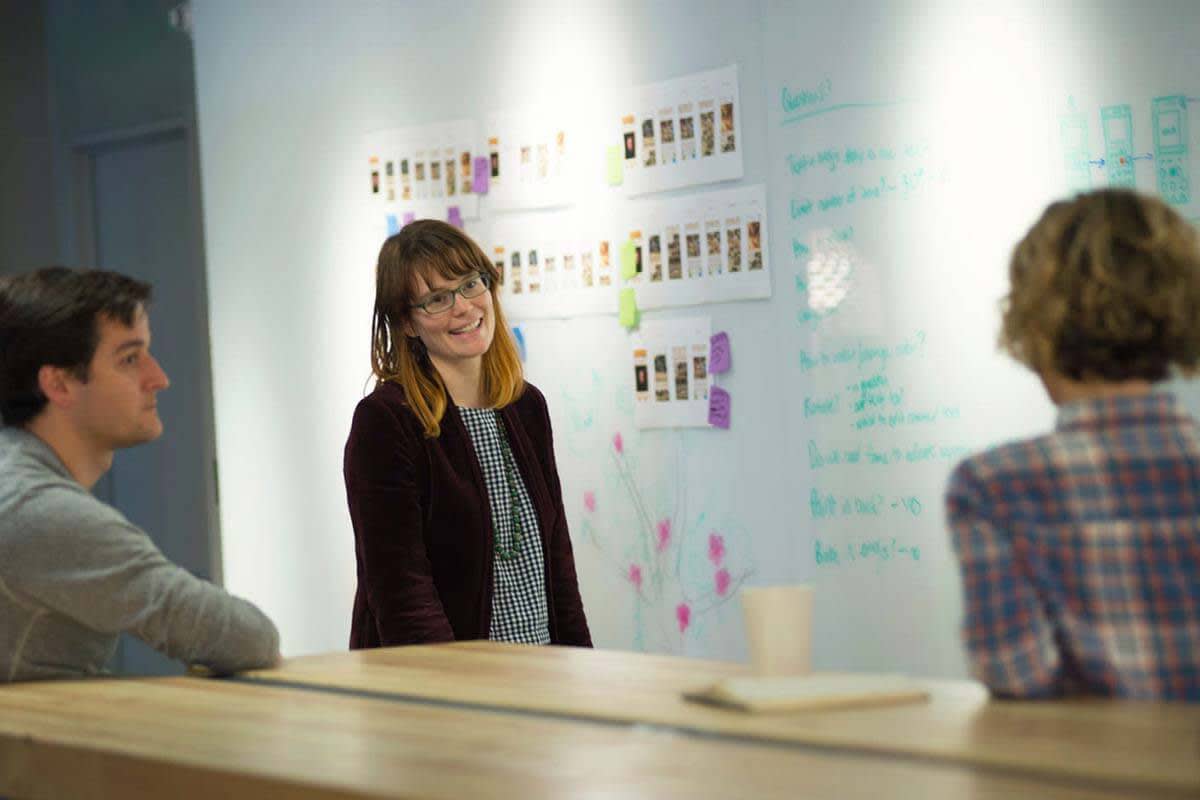As a designer, I’m always looking for new inspiration from workshops, meetups, blogs, and lectures. Recently I attended a Design Swarm workshop, led by Surya Vanka. It was all about creating and thinking big with others and, in the end, giving all of those ideas away. That struck me: what does it mean and look like to give your ideas away? I’ve been practicing this philosophy at work for a few weeks and here’s what I’ve learned.
Share early and often
Share your ideas with others, especially early on in a project. Every time you share what you are working on, you’ll discover a new way of looking at the problem. The best ideas may come from people who aren’t familiar with your project. An outside perspective might shine a light that leads to an “I didn’t even think of that!” moment.

Put it front and center
If you aren’t able to share your ideas in a brainstorming session with colleagues, get group creativity going by hanging sketches or concepts on a wall where people in your office often frequent or gather. Ask them what they think. Be open and willing to hear what they have to say.
Accept unknowns
When you’re starting a new project, let the unknown be a part of your process. Especially in technology, if you wait until you have everything figured out, the world will be onto a new thing. Just get started. You will discover along the way what works or doesn’t.

Trust the creative process
You don’t have to have all of the answers when starting out a new project. Trust that you will get to where you need to be and the pieces will fall in place.
Set aside skepticism
It’s okay to be uncertain about new ideas, both from others and yourself. Set doubts aside and start by thinking big first. You can always go back and refine. Plus, the more ideas you can generate in the beginning, the more likely you are to arrive at something that really stands apart.
Let it go to make it big
It’s easy to be protective of your idea, but if you stop holding on and let others contribute and modify it, it can turn into something a lot bigger.

Build, don’t destroy
Criticism is easy, and can be a familiar go-to when approaching new ideas. Try to hold off on breaking something down. Instead, build first. When giving feedback trying using language like “yes and what if…” or “yes and how about….”
Messy is good
Idea generation can be a little chaotic or messy. Concepts may overlap confusingly, and it might be hard to follow a single line of thought before another direction gets suggested and built on. This is a good signal that everyone’s energized and participating.
Mistakes aren’t bad
Let mistakes become opportunities to learn something. Stay neutral and unattached about it, so you can be analytical and piece together why it didn’t work. Knowing what doesn’t work can give you clarity about what will work.

There’s something very powerful about giving others complete creative and inventive freedom. Try it out. Allow others to run with your idea, add things to it, change it, turn it inside out, and you’ll end up with something that’s bigger and better than what you started with.
